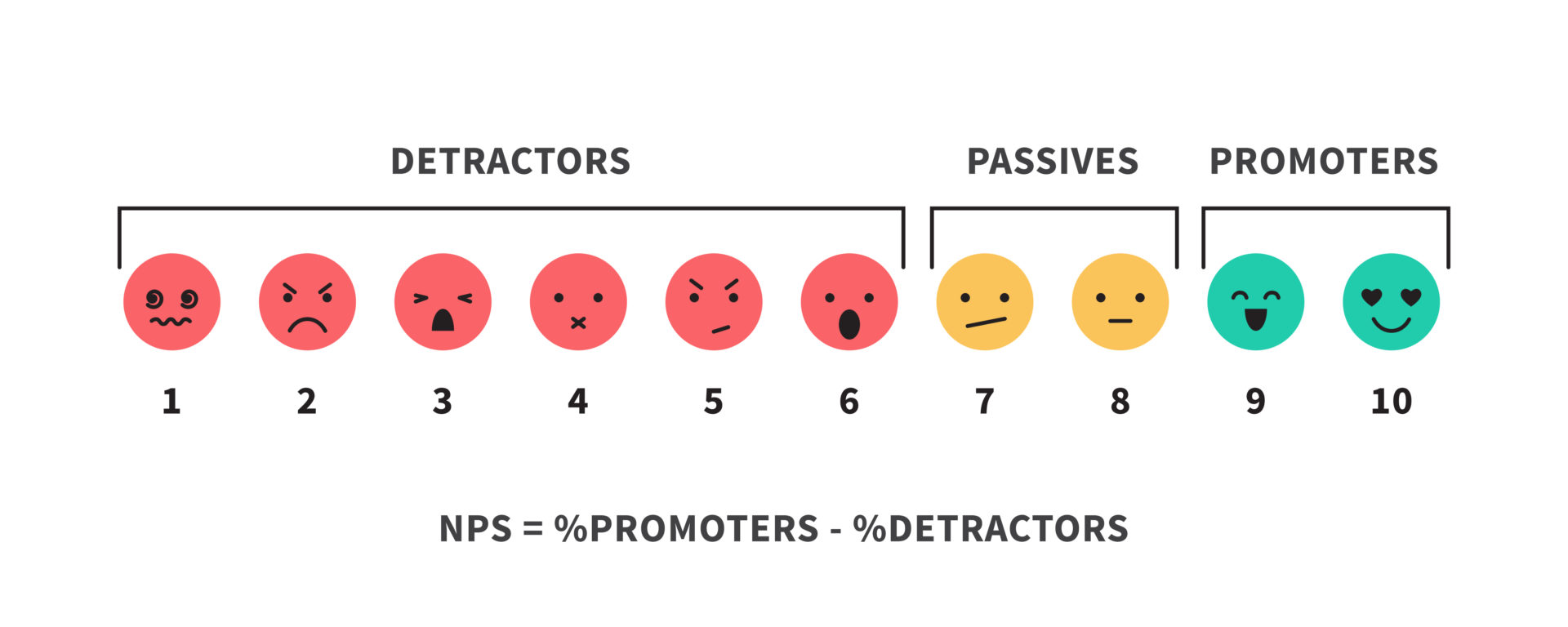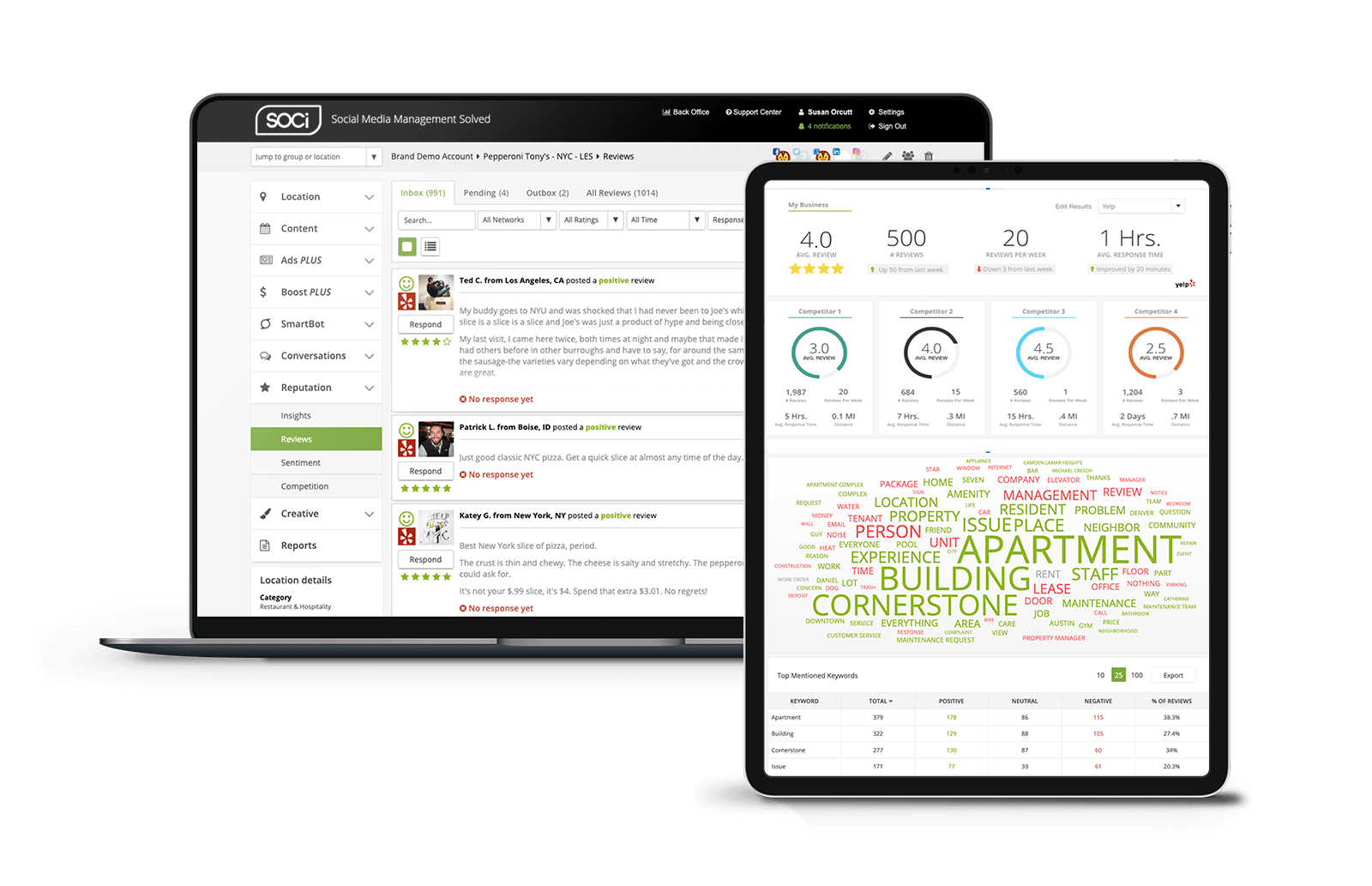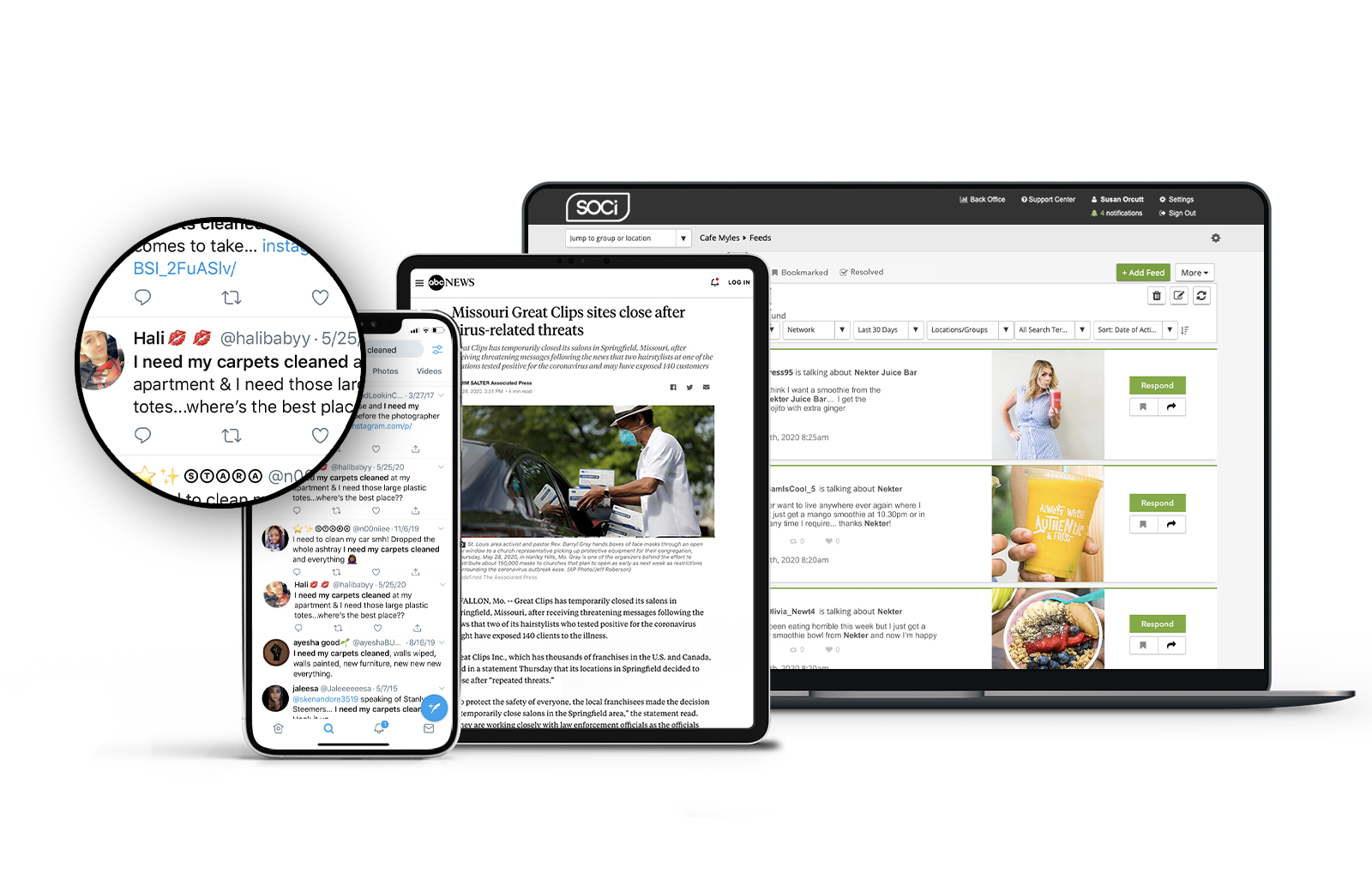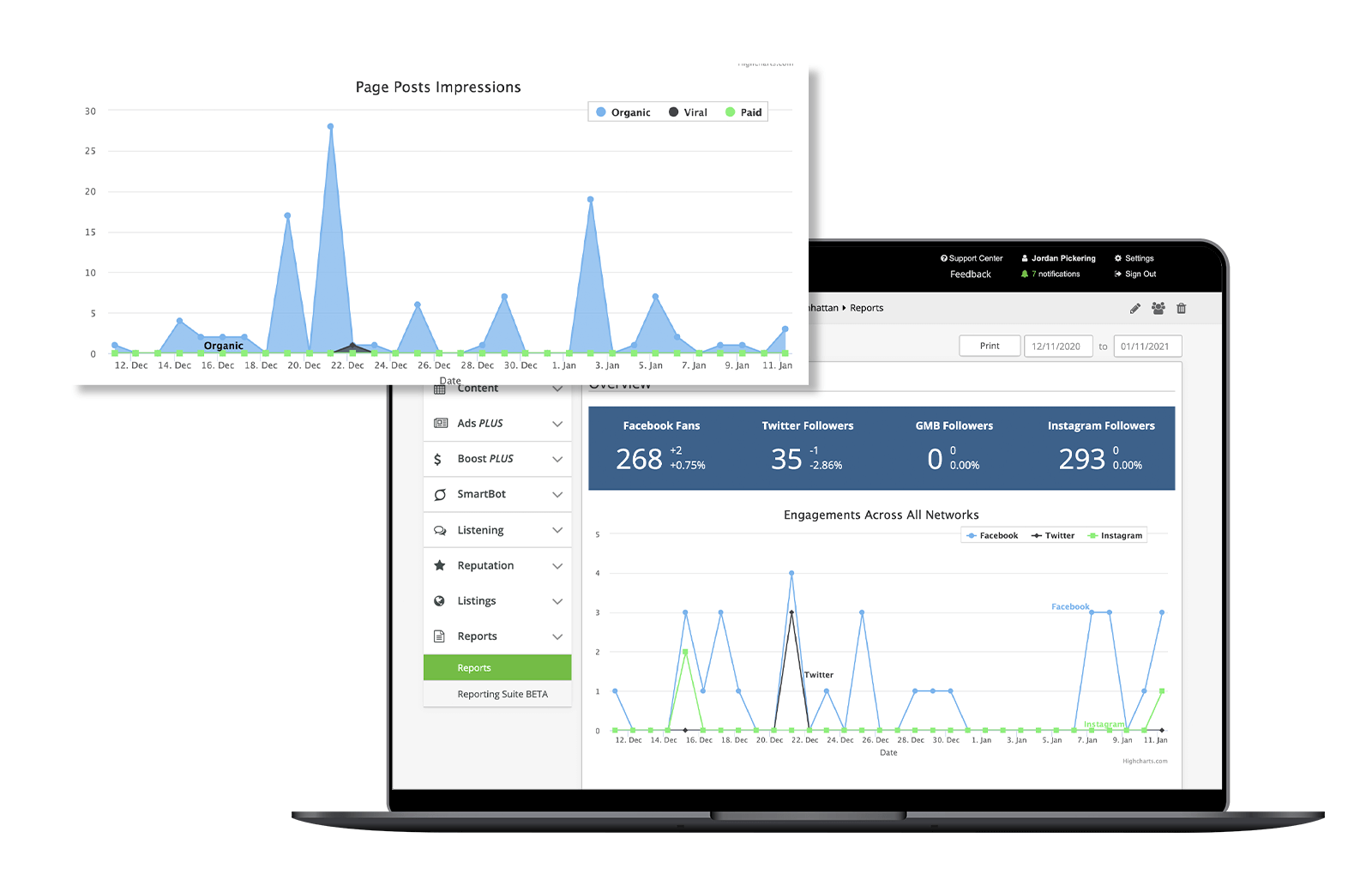5 Customer Advocacy KPIs You Should Be Implementing Now
Table of Contents
Customer advocacy is a business model that puts customers’ needs first. A customer advocacy business model can only exist if the company’s culture is customer-centric. As a multi-location business, you likely understand the importance of having a business model that puts customers first. Still, it’s important for all significant departments — customer service, sales, and marketing — to always consider the customer when making updates and changes.
Having a customer-centric business model:
- Forces businesses to gauge how much their customers enjoy their products or services, which helps the company make quicker customer-based decisions.
- Generates customer (brand) advocates who participate in free word of mouth marketing.
In today’s digital-first world, it’s essential to have customer (brand) advocates. For instance, 76 percent of B2B customers use three or more advocacy sources before making a purchase decision.
When creating or improving your customer advocacy business model, you need the proper customer advocacy KPIs (key performance indicators). In this blog, we’ll further define customer advocacy and the five best customer advocacy KPIs you should be measuring and scaling to build customer loyalty and win new customers.
Customer Advocacy Defined
Earlier, we defined what a customer advocacy business model is but, customer advocacy is more nuanced due to other publications conflating the term. We’re here to clear things up! Throughout this blog, we’ll be referring to customer advocacy programs and customer (brand) advocates, which we’ll define below.
Customer Advocacy Program
A customer advocacy program is an internal plan for a company to act in the customer’s interest. It means constantly thinking about the customer experience. With a customer advocacy program, one of the organization’s main goals is to retain customers. Your multi-location business can better retain customers by addressing their needs and expectations.
Customer (Brand) Advocates
A strong customer advocacy program has customer advocates. For simplicity’s sake, we’ll call them “brand advocates.” These advocates love your organization and brand. They’ll often speak positively about your brand and recommend you to others.
Now that “customer advocacy program” and “brand advocates” are defined, let’s dive into customer advocacy KPIs.
Customer Advocacy KPIs
Knowing and implementing your customer advocacy KPIs will help dictate your customer advocacy strategy and ultimately improve your multi-location business’ ROI. Without KPIs, your business won’t be able to gauge the success of its advocacy programs.
ROI. Without KPIs, your business won’t be able to gauge the success of its advocacy programs.
1. Customer Satisfaction Score
What is CSAT:
A customer satisfaction (CSAT) score is a metric that measures how pleased a customer is after interacting with your multi-location business.
How to measure CSAT:
To measure CSAT, you need to send a CSAT survey to a customer directly after they interact with your products, services, or customer support team.
For instance, if a client uses your demo or product for a week, send a CSAT survey to gauge their interest in your product. Or send a CSAT survey seconds after a client finishes interacting with a customer service representative.
CSAT surveys typically begin with some form of the closed question, “how satisfied were you with (our product, our customer service, or your shopping experience) today?”
- Extremely dissatisfied
- Somewhat satisfied
- Neither satisfied nor dissatisfied
- Somewhat satisfied
- Extremely satisfied
You can also ask dichotomous questions: “Were you satisfied with our customer support representative, [Name]?”
- Yes
- No
If you need more qualitative data (descriptive or conceptual data), you can add an open-ended question like, “What is the main reason you gave that score?”
You can send these CSAT surveys via email, chatbot, or SMS text. It’s best to keep customers within the same channel. For example, if you interact with a customer over a phone call, send the CSAT survey via text message. Or, if the customer contacted you via chatbot, send the survey within the chatbot platform after your team resolves the issue.
Why CSAT matters:
You can send CSAT surveys after nearly any interaction with a customer. This punctual data will help you quickly identify and quantify customer pain points. It’s then your business’ job to address and fix these customer pain points.
Think about it this way: Having satisfied customers is the bare minimum for successful companies. You can’t even begin a customer advocacy program without happy customers, much less have brand advocates. This is why your CSAT scores matter so much.
For instance, if you’re a restaurant brand and one of your locations in Austin, TX is doing quite well and has excellent reviews, while another one less than a mile away isn’t doing so hot. An easy way to find out why such a contrast exists is to send CSAT surveys after customers finish dining by email or a QR code on their receipt. From these CSAT surveys, you can begin to diagnose why one location has much higher customer satisfaction than the other.
2. Net Promoter Score
What is NPS:
A net promoter score (NPS) measures and predicts customer loyalty. NPS originates from Fred Reichheld in 2003 when he worked at Bain & Company. Reichheld and his team found the best way to measure and predict customer loyalty is by asking one simple survey question:
“How likely are you (the customer) to recommend [company X] to a friend or colleague?”
How to measure NPS:
Similar to getting customer satisfaction data, you should send NPS surveys to customers. With NPS surveys, respondents are typically categorized as Promoters (9 or 10), Passives (7 or 9), or Detractors (0-6) on a scale of 0-10. Below is a breakdown of these groupings:
- Promoters (9-10): Promoters are your brand’s biggest fans. They’re your brand advocates who will most likely remain customers and bring in many referrals.
- Passives (7-8): Passives are satisfied customers but can churn at any time. Their customer lifetime value (CLV) is often less than half that of promoters.
- Detractors (0-6): Detractors are unsatisfied customers. They have high churn rates and can harm your brand’s reputation with negative reviews or opinions.
The equation below can be used to calculate your NPS score:
Number of promoters – number of detractors / number of responses (x100) = NPS %
Image of NPS scale and formula promotion, courtesy Voin_Sveta at Shutterstock
Unlike CSAT surveys, which are sent directly after an interaction with a customer, you should send NPS surveys on a scheduled basis. Send an NPS survey a week and a month after their acquisition date for new clients. For long-term customers, send NPS surveys quarterly or bi-annually to see if anything’s changed.
The exception to this rule is if you need more granular data. For instance, let’s say your business keeps losing customers at a certain point or a specific time along the customer journey. Then, it’s best to send both an NPS survey and a CSAT survey to understand the customer pain point better.
Why NPS matters:
Knowing your net promoter score helps you gauge your customer loyalty and help predict both customer lifetime value and revenue. It also enables you to determine how many Promoters and potential brand advocates you have, helping your multi-location business build its customer advocacy program.
Note that you need CSAT and more granular surveys to better understand why customers rank as Promoters, Passives, and Detractors, and what causes them to jump between categories
It’s also worth noting that not all Promoters will actively advocate for your brand. They could simply have a strong positive sentiment about your brand but don’t intend to act on it via a review or worth of mouth marketing.
3. Online Reviews and Sentiment Analysis
Online reviews offer another way to measure customer advocacy. Reviews give critical insight into what customers think and say about your multi-location business and individual business listings.
Today, ratings and reviews are the main factors consumers use to determine which company they want to do business with. While not all negative reviews are bad, too many of them can hurt your brand’s reputation and sway others from doing business with you. On the other hand, positive reviews help your reputation and influence others to purchase from your company.
When you receive a review, regardless if it’s positive or negative, your multi-location business must gather the data from the review and respond to it as a part of your customer advocacy efforts.
- The collected data will help your team determine customers’ major pain points and what others enjoy most about your product or offerings.
- Today, 77 percent of consumers expect a response from a company to their review. Responding to reviews will improve your brand’s reputation and increase customer advocacy.
When looking through customer reviews, the KPIs you should pay attention to is the average star rating and general sentiment. If one of your location’s average star ratings changes, that’s relatively easy to monitor and track.
However, the qualitative data associated with reviews is more difficult to track and analyze. Sentiment analysis can help you make sense of this data. Sentiment analysis uses natural language processing (NLP) to determine if a chunk of text, in this case, a review, is positive, negative, or neutral.
With sentiment analysis, you can better understand patterns within your qualitative data. You’ll be able to narrow down where the negative or positive sentiment stems from. Is it a product issue or a customer service problem? Perhaps it’s a location-specific issue. This is the type of insight your multi-location business can gain from sentiment analysis.
As a multi-location business, you may be receiving hundreds of online reviews across business locations each week. Keeping up with your online reviews across all business locations can be challenging. Not to mention keeping track of sentiment analysis. Finding a solution that can help manage your efforts at scale is essential. That’s where SOCi comes in.
SOCi’s reviews product enables you to keep track of each review on all major review sites. Through SOCi, your local, regional, and corporate teams will always know which reviews and social engagements are addressed, and which ones still require attention to ensure the prompt responses consumers expect.
For more insight into what it takes for your multi-location business to craft a winning online reputation management strategy, check out our Multi-Location Marketer’s Guide to Online Reputation Management.
4. Social Listening Data and Insights
Social listening gathers and analyzes organically produced data about your business and its competitors. Conversations about your business or field occur on social media, chat forums, and other online sites, and could be happening without your business knowing it. Read our blog on social listening and customer advocacy to better understand how the two are connected.
It’s essential to listen to these conversations to understand what customers think of your product or service, where you’re losing out on competitors, etc. The data collected from social listening is an important KPI because it gives you insight into the following, which then allows you to make adjustments accordingly:
- Product: You’ll gain organic customer feedback about your product, which can then be used to help you make product updates and changes.
- Content: Social listening can also give you content feedback. You can then tailor your online content (blogs, webinars, case studies, guides, social media posts, etc.) to better resonate with your target audience and meet their needs.
- Competitive intel: Social listening gives your business an advantage over competitors by knowing their customer pain points. This helps ensure that you won’t repeat the same pain points and allows your business to address these issues in your sales and marketing tactics.
- User-generated content: You can discover and reshare user-generated content (UGC) through social listening. If you find a customer testimonial or positive customer experience, make sure you have permission from the consumer before resharing.
While social listening is a must, it’s challenging to implement it without the right software. Again, SOCi is here to help. SOCi’s listening software centralizes corporate and local conversations across the web and social media, providing your multi-location business with a holistic overview of your business at both the local and national level. Read how Anytime Fitness used SOCi Listening to understand conversations around their brand.
5. Social Media Interactions
The last customer advocacy KPI your multi-location business should leverage is social media. Specifically, social media interactions. Social media is a valuable tool for measuring customer advocacy. It inherently measures how much your followers (often brand advocates) enjoy the localized and company-branded content your multi-location business posts.
The primary customer advocacy KPIs for local social are interactions and engagements such as likes, comments, and shares. While you can easily track the social interactions mentioned above, remember that if you’re promoting a new product or gated piece of content on social media, it’s important to include a call to action (CTA) with a trackable link for lead generation purposes.
Brand advocates can also use social media to spread brand awareness. Social media makes it easy for your brand advocates to promote your business by interacting with your content and sharing it themselves. When your brand advocates endorse your company and its products, they’re likely to reach others within your target market.
If you need help managing and tracking KPIs on your social media platforms, consider using SOCi’s social media software. With SOCi’s reporting suite, you can monitor and gain insights from all of your organic and paid social media campaigns. In addition, your multi-location business can manage and respond to engagements with pre-saved templates, saving your local teams time and energy as you interact with your brand advocates and target audience.
For more tips on building a solid local social strategy that will help boost engagement and strengthen your customer advocacy efforts, check out our Localized Social Content Guide.
Now that you understand what it takes to start improving your customer advocacy efforts, it’s time to get started! If you implement a customer advocacy program or have brand advocates, it’s essential to keep track of these KPIs to understand what’s working and what’s not. Since these KPIs span multiple digital platforms, finding a centralized software management system that helps you track these metrics in a single platform is a must. SOCi is the marketing platform for multi-location brands.
SOCi’s team and products can help your multi-location business measure and track your customer advocacy KPIs locally and nationally. Using our listening, social media, and reputation management tools, you’ll be able to run a successful customer-centric business. If you want to learn more about how SOCi can strengthen your customer advocacy program, request a demo today!






